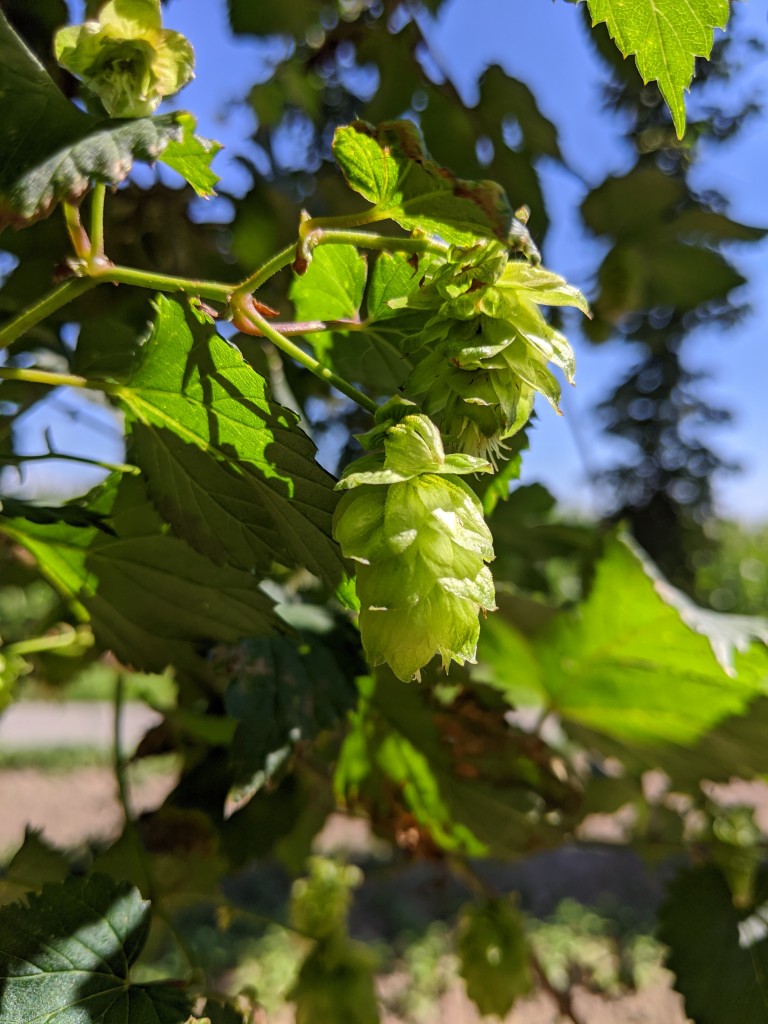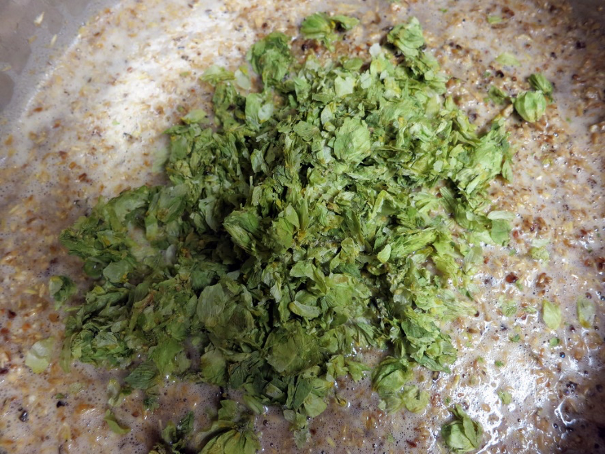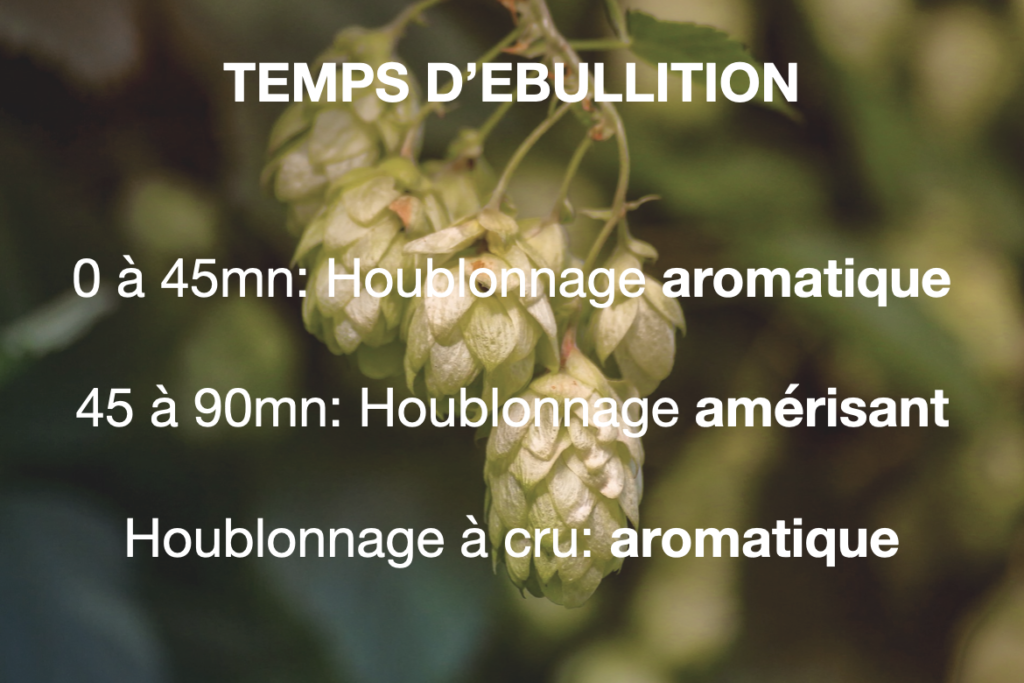The different hopping techniques in beer
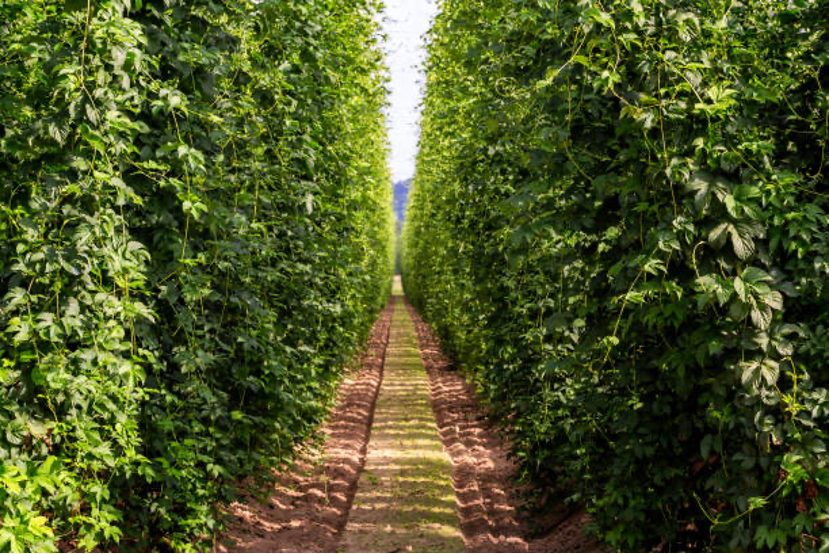
Article written in collaboration with Alexandra Berry
Hops are one of the four essential elements in the creation of beer. Not only does it provide the bitterness and various aromas that we find in our glasses, this little plant has preservative properties that have greatly contributed to the development of beer over the centuries.
Once harvested, the hops are dried and packaged in a cool place to allow for proper storage, often pelletised. Pelletising involves crushing the dry hops to produce a powder with homogenous aromatics and acids before being pelleted. Both forms of hops can be suitable for brewing, although the pellet is widely preferred by brewers today. This is because the pellet provides consistency in bitterness and aroma across brews, precise control of IBU(International Bitterness Unit) and yield Aromatic, and less wastage. Although the cone generally gives fresher, more potent oils than the pellet (provided it is used within hours of harvesting), the loss of beer when filtered through the flowers is still about 6%.
There are then several types of pellet: T-90 and T-45. Identical in their manufacture and packaging, the T-45 is more concentrated in lupulin. Indeed, after being ground, the hops are sieved at -35°C, which removes their vegetable matter and leaves only a concentrate of essential oils. This increases the alpha acids by reducing the amount of material used. This means less raw material, less waste during the filtration of the brew for the same result Aromatic. However, these pellets are rarer on the market and more expensive.
Some brewers have also usedhop extract, an extraction process patented by J. R. Whiting in 1875. Also known as CO2 Hop Extract, it is a resin produced by CO2 extraction from hops that concentrates its essential oils. The advantage is to further reduce material loss during brewing, to accurately measure aroma and IBU, and to reduce storage and transport requirements. This is a further step away from the raw material with a relatively energy-intensive processing.
In short, it's up to you to make your own choices 😉
Some of the hopping techniques used
Whatever form of hops is chosen, several hopping techniques are possible depending on the flavours and the recipe that the brewer wants to create. Every detail will influence the final recipe: the variety and quantities of course, but also the temperature, boiling and fermentation times...
Mash Hops
This technique consists of adding the hops directly to the wort (barley heated with water) in the mash tun. By adding the hops immediately, their oils are solubilised in the matter and this technique allows the development of a balance Aromatic. The bitterness will be rather timid but the aromatics will be emphasised in the finished product. However, this requires a large amount of hops and a lot of wastage without achieving too much impact Aromatic on the brew. For brewers wishing to test it, it is advisable to hop Bittering afterwards.
First Wort Hopping (pre-boiling)
Traditionally a German technique, the First Wort Hopping consists of adding the hops to the hot wort (about 70-80°) when it is filtered and transferred to the boiling tank. As the tank fills with wort, the hops will soak in at a moderate temperature. They can then gently release their essential oils without evaporating completely. This technique also allows the oils to be solubilised in the wort so that they can be preserved during the boiling phase, during which the bitterness of the hops is obtained. This bitterness will be less aggressive on the palate than with a classic hop, with a more pronounced complexity Aromatic . Noble hops, or often called "finishing hops" with very aromatic characteristics are preferred for this technique, for their interesting profiles and lowalpha acid content.
The effects of First Wort Hopping are similar to those of a dry-hop (see below), highlighting aromatics without developing bitterness, often used to brew a Pilsner or to highlight a Aromatic profile of an IPA.
Boil Hopping
There are three types of hopping: bitter hopping, aroma hopping and continuous hopping.
The conventional method for hopping Bittering is to add them at the beginning of the boil for isomerisation of the alpha acids (it is these acids that will give the bitterness). The earlier the hops are added during the boil, the more bitterness will be favoured at the expense of Aromatic as the essential oils evaporate.
The brewing time will depend on the desired IBU level and also on the hop variety, generally between 60 and 90 minutes. Hops with a high alpha acid content are recommended for this type of hopping.
Aroma hopping comes into play , which consists in favouring aromas over bitterness. Often as a complement to the first hopping, this involves adding aromatic hops with low alpha acid content in the last 10 to 15 minutes of the boil in order to preserve the essential oils. As you can see, hops with aromatic properties are particularly favoured for this purpose.
Finally, there is continuous hopping , where small amounts of hops are added throughout the boil. This emphasises both the bitterness and theAromatic of a hop. This method is usually applied in the last 40 minutes of the boil and can be adapted to any type of hops, boil time and quantity, depending on the brewer's desired result.
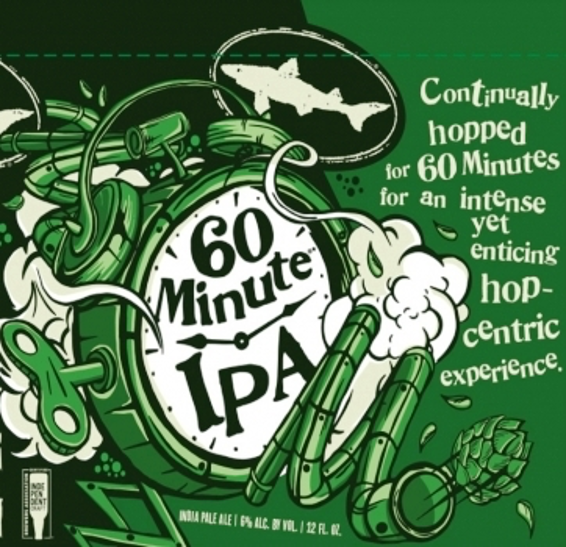
Post-boil Hopping
There are several ways to do a post-boil hop.
The first is the Flame-Outalso called late hopping (tariff hopping) and consists of adding the hops at the end of the boil, when the water is still hot (over 70°C), which ensures the extraction and survival of the essential oils. The hops are left for about 15 minutes to allow the extraction of the aromas while the wort cools. The floral and fruity aromas that are sought after in some varieties are thus found. It is possible to use bittering hops in large quantities as well in order to obtain an often softer bitterness in the finished beer.
The second is during the Whirpooling (a technique of centrifuging the beer to concentrate the deposits in the centre of the tank for filtering): once the temperature of the brew has dropped to between 60 and 80°C, the ideal temperature to promote aromatisation. Also called the Hop StandThis technique allows the maximum extraction of the aroma from the hops, particularly the aromatic oils called myrcenes. It is these oils that give the beer its citrus and tropical fruit flavours. The brewer can also use a hopback , which is a hop container that is connected in series between the tank outlet and the cooler. The still warm wort is thus infused with hops at the tank outlet and receives fresh aromas and essential oils just before fermentation.
The last method, and probably the best known today, is dry hopping . In dry hopping, the brewer adds the hops directly to the fermentation tank. Again, the brewer can choose to add them at the beginning or end of the fermentation, depending on his preference. This allows the full flavour of the hops to be extracted without the bitterness and is a technique particularly used to obtain very floral or fruity IPAs. This dry hopping usually takes place for 4-5 days at a temperature of 15° before going on to cold crash, a cooling process lasting 2 to 3 days.
Finally, it is also possible to hop your brew during the resugaring phase (to create CO2 in the beer), and thus just before bottling or kegging. This results in a pressure fermentation, which preserves the essential oils of the hops - and thus their full Aromatic !
Thus, each technique will have its impact on the final result of the brew. That said, any brewer can have fun and experiment with varieties, fermentation times or even the form of hops used! With new varieties being created all the time, the hop possibilities are endless and promise a taste discovery with every sip.
For more information:
Acitelli, T., (2013), The Audacity of Hops, Chicago Review Press Inc, Chicago.
Brown, P., (2017), Miracle Brew, Chelsea Green Publishing.
Hieronymus, S., (2012), For the Love of Hops, The Practical Guide to Aroma, Bitterness and the Culture of Hops, Brewers Publication,
Mosher, R. (2004), Radical Brewing: recipes, tales and world-altering meditations in a glass, Brewers Publications, Division of the Brewers Association, United States of America.
Steele, M., (2012), IPA Brewing Techniques, Recipes and the Evolution of India Pale Ale, Brewers Publications, Boulder, Colorado.


